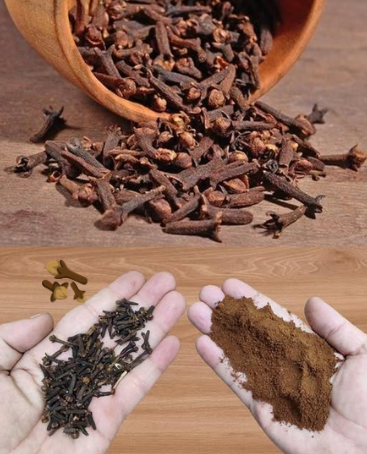
Tired of battling ants, cockroaches, and moths without turning your house into a chemical lab? Believe it or not, a simple combination of cloves and coffee grounds can create a powerful, natural pest deterrent. Not only is it safe for your family and pets, but it’s also cheap and surprisingly effective. Let’s dive into why this works and how to use it properly.
Why Cloves and Coffee Work Against Pests
Cloves contain eugenol, a naturally occurring compound that acts as a strong insect repellent. Eugenol masks scents that pests rely on for navigation, making your home less attractive to them. Coffee grounds, whether fresh or used, amplify this effect by confusing pests further and masking the pheromone trails ants and cockroaches use to find food. Together, cloves and coffee create an invisible barrier that most household insects simply avoid.
The Science Behind the Smell Barrier
Insects rely heavily on their sense of smell to find food and reproduce. The pungent aroma of cloves overwhelms their olfactory system, while coffee grounds add a layer of scent confusion. Think of it like rolling a foggy cloud through a maze — the insects lose their bearings and steer clear. The combination doesn’t kill pests but discourages them from entering treated areas, making it a preventive and sustainable solution.
How to Prepare Your Cloves and Coffee Mixture
Ingredients:
- Whole cloves
- Ground coffee (fresh or used)
Instructions:
- Mix equal parts of cloves and ground coffee in a bowl.
- Place the mixture in small dishes or sprinkle it directly where pests frequent:
- Near windows and doorways
- Under sinks and around plumbing
- In closets and cupboards
Pro Tips: For maximum effectiveness, refresh the mixture every 2–3 weeks. If using used coffee grounds, ensure they are dry to avoid mold growth.
Video : Coffee, Cloves, Candle: Unveiling the Secret to DIY Aromatic Insect-Repellent Creations
Targeting Common Household Pests
Cockroaches: These nocturnal scavengers thrive in dark, damp places. Place your cloves-coffee mixture under sinks, behind appliances, or in pantry corners to discourage them from nesting.
Ants: Ants rely on scent trails to communicate with their colony. Sprinkle the mixture along ant paths, around door frames, and near food sources. You’ll notice a drop in activity as they avoid treated areas.
Moths: Clothing moths are notorious for ruining fabrics. Place small bowls of the mixture in closets, drawers, and storage bins. The strong aroma keeps moths away from your clothes without using harmful chemicals.
Additional Benefits of Cloves and Coffee as a Pest Deterrent
Beyond being effective, this mixture has extra perks:
- Eco-friendly: No harmful pesticides or synthetic chemicals are released into your home.
- Cost-effective: Both cloves and coffee are inexpensive and often already in your kitchen.
- Safe: Perfect for households with children or pets, unlike many commercial sprays.
- Aromatic: Unlike chemical repellents, cloves and coffee leave a pleasant, natural scent.
Tips for Maintaining an Insect-Free Home Naturally
While cloves and coffee can help, combining them with other preventive measures strengthens results:
- Keep food sealed and clean crumbs immediately.
- Regularly empty trash bins and clean under appliances.
- Seal cracks and gaps around doors and windows to prevent entry.
- Rotate and refresh cloves-coffee mixtures every few weeks for consistent protection.
Video : Bug-Free Bliss: Coffee Candle and Cloves Combo for Insect-Free Living!
Conclusion: Simple, Effective, and Safe Pest Control
By combining cloves and coffee, you can repel ants, cockroaches, and moths naturally, keeping your home safe and chemical-free. This method works by confusing pests’ sense of smell and creating a scent barrier they avoid at all costs. It’s inexpensive, eco-friendly, and easy to set up — all you need is a few kitchen staples. Try it today and enjoy a cleaner, pest-free home without the stress of harsh chemicals.
This simple trick proves that sometimes the most effective solutions are already hiding in your kitchen pantry!


